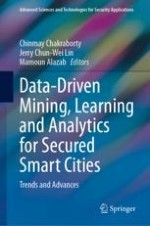2021 | OriginalPaper | Buchkapitel
End-to-End Learning for Autonomous Driving in Secured Smart Cities
verfasst von : Dapeng Guo, Melody Moh, Teng-Sheng Moh
Erschienen in: Data-Driven Mining, Learning and Analytics for Secured Smart Cities
Aktivieren Sie unsere intelligente Suche, um passende Fachinhalte oder Patente zu finden.
Wählen Sie Textabschnitte aus um mit Künstlicher Intelligenz passenden Patente zu finden. powered by
Markieren Sie Textabschnitte, um KI-gestützt weitere passende Inhalte zu finden. powered by
